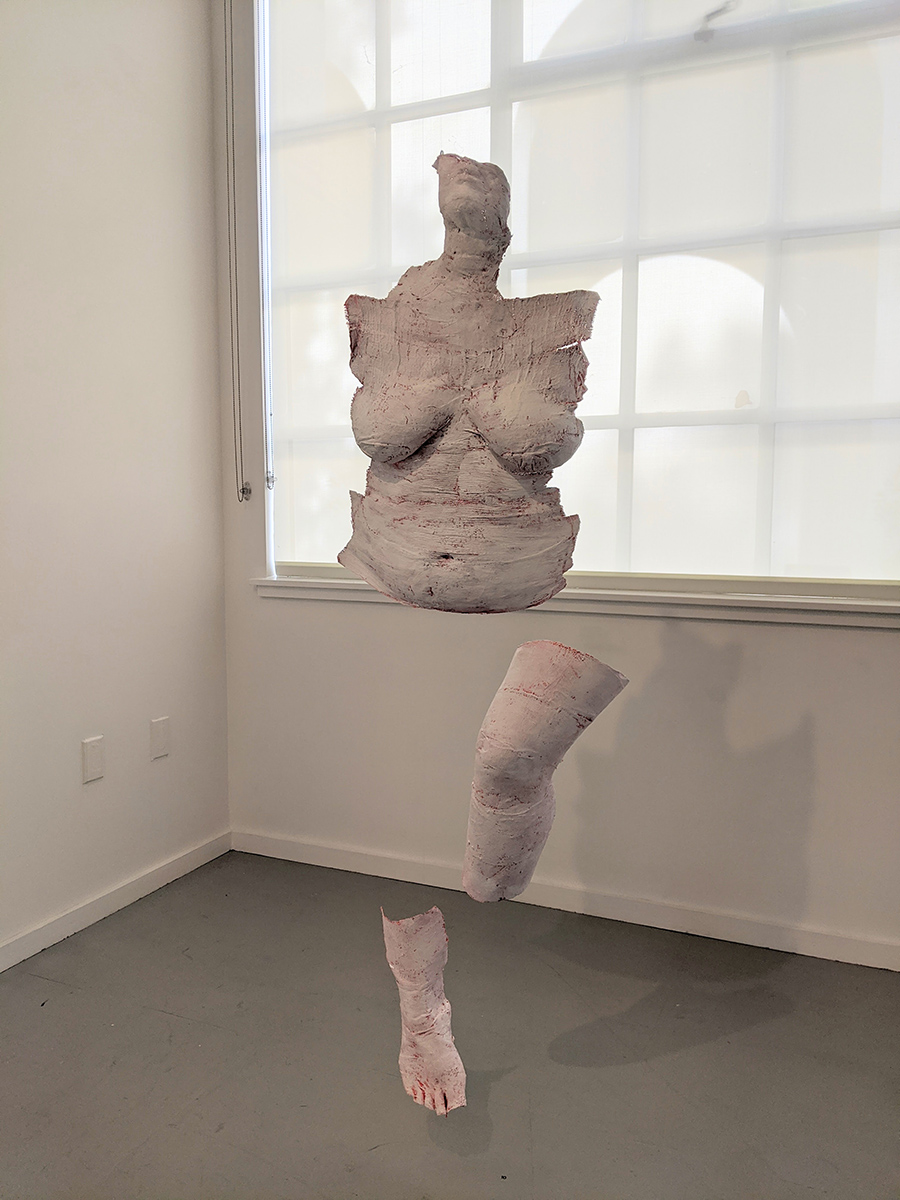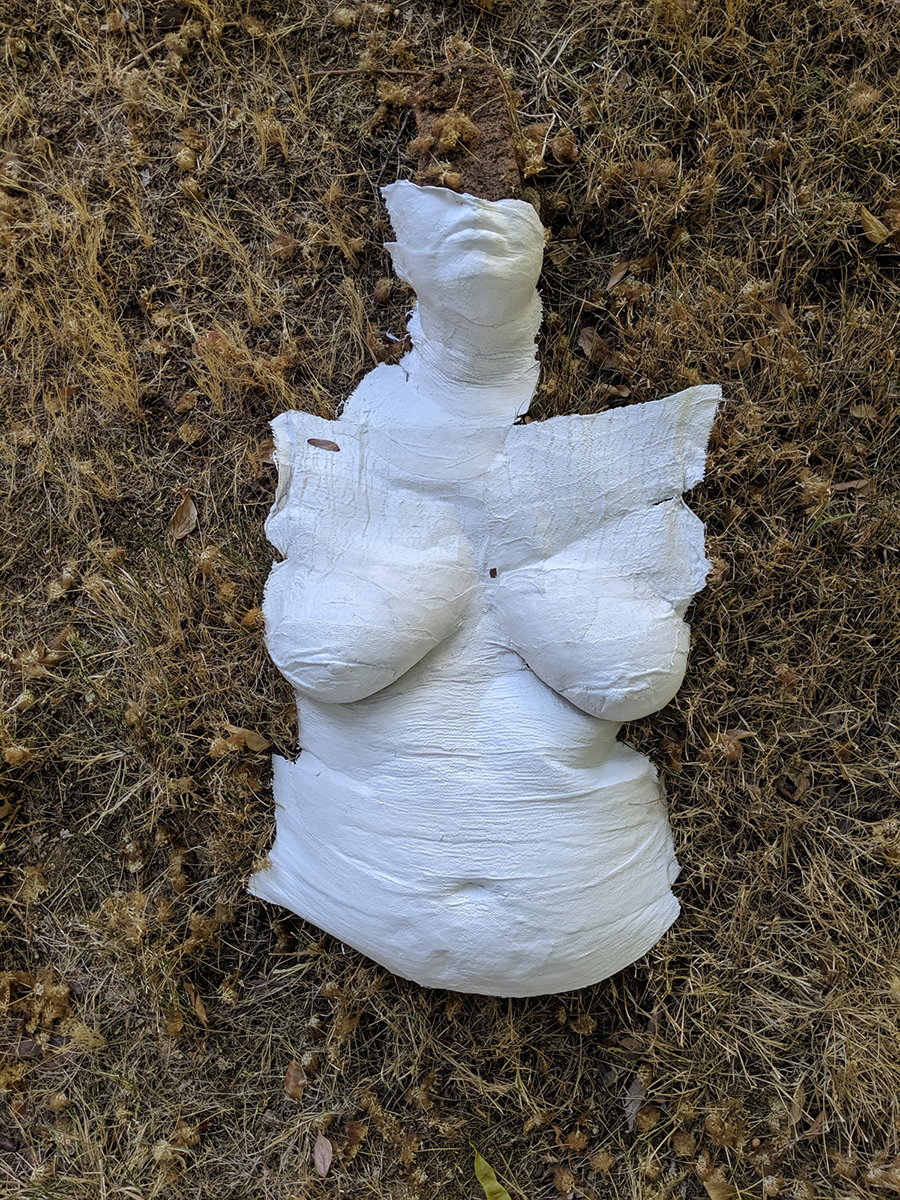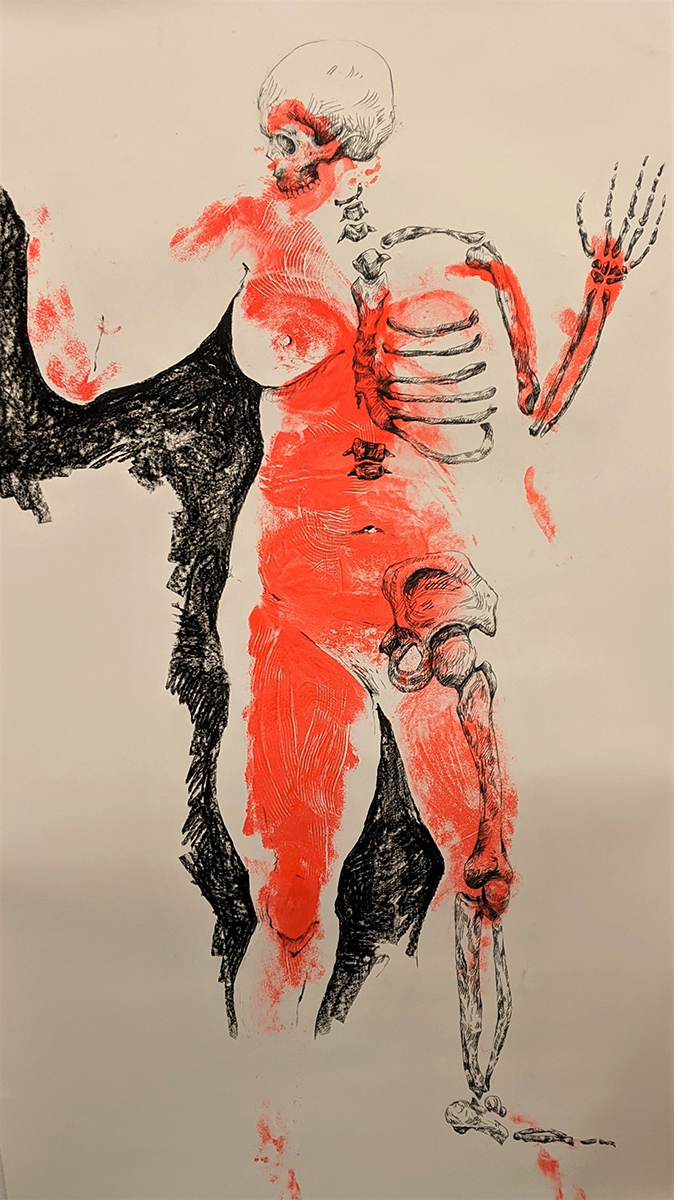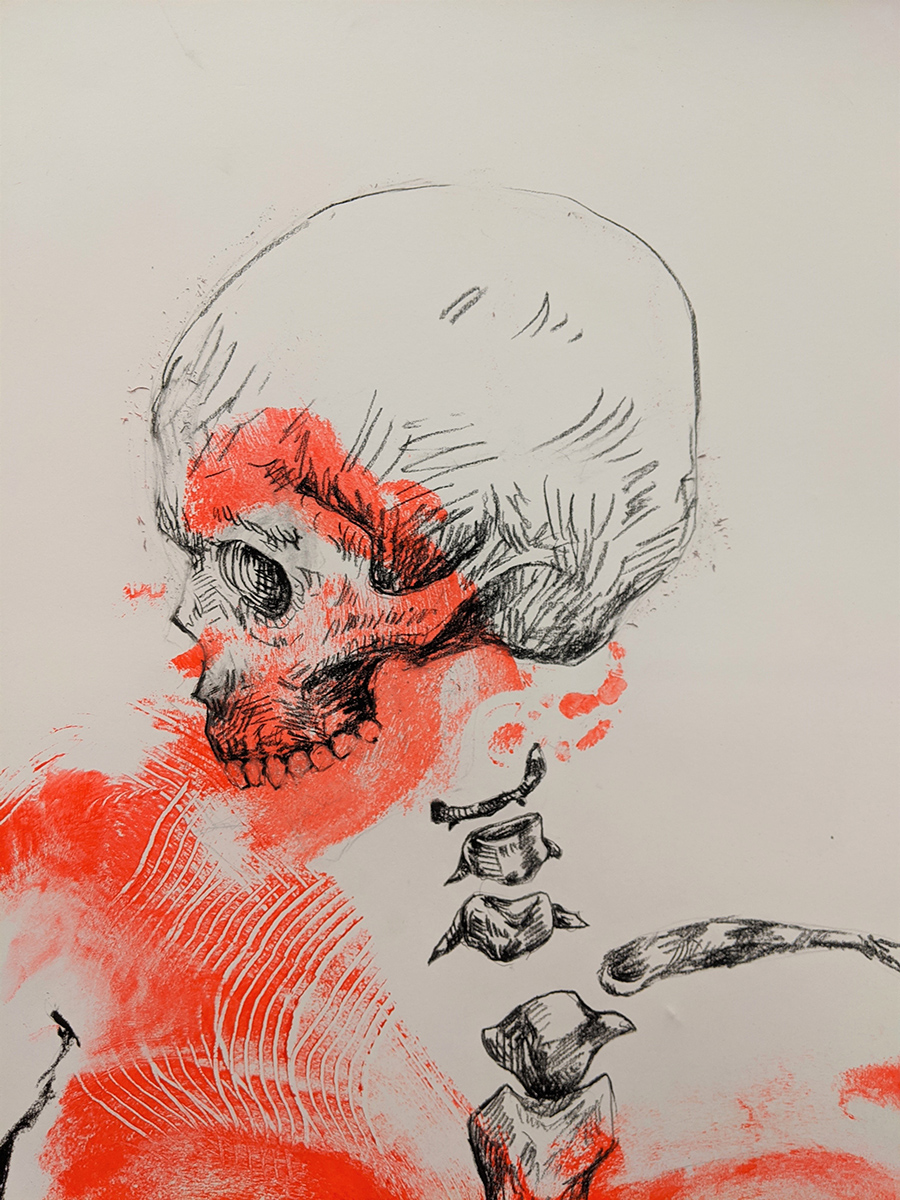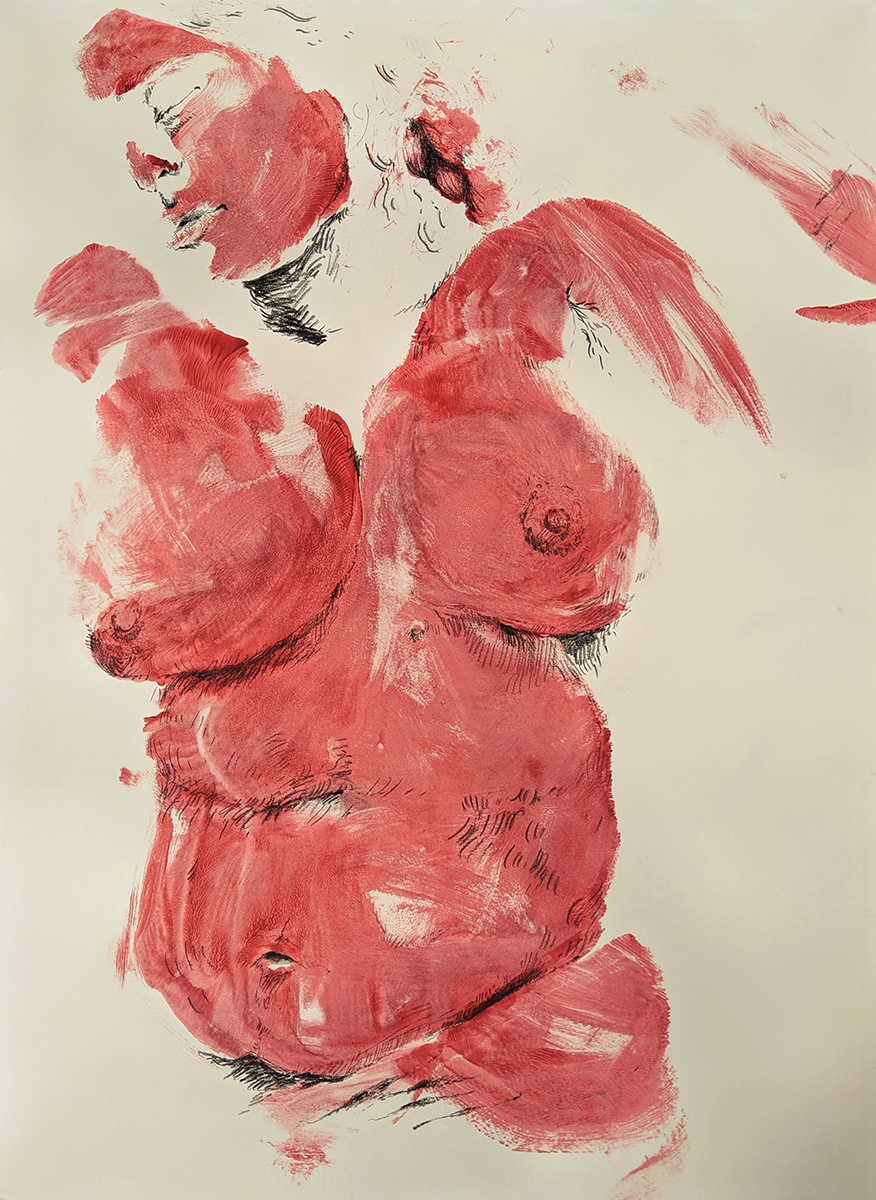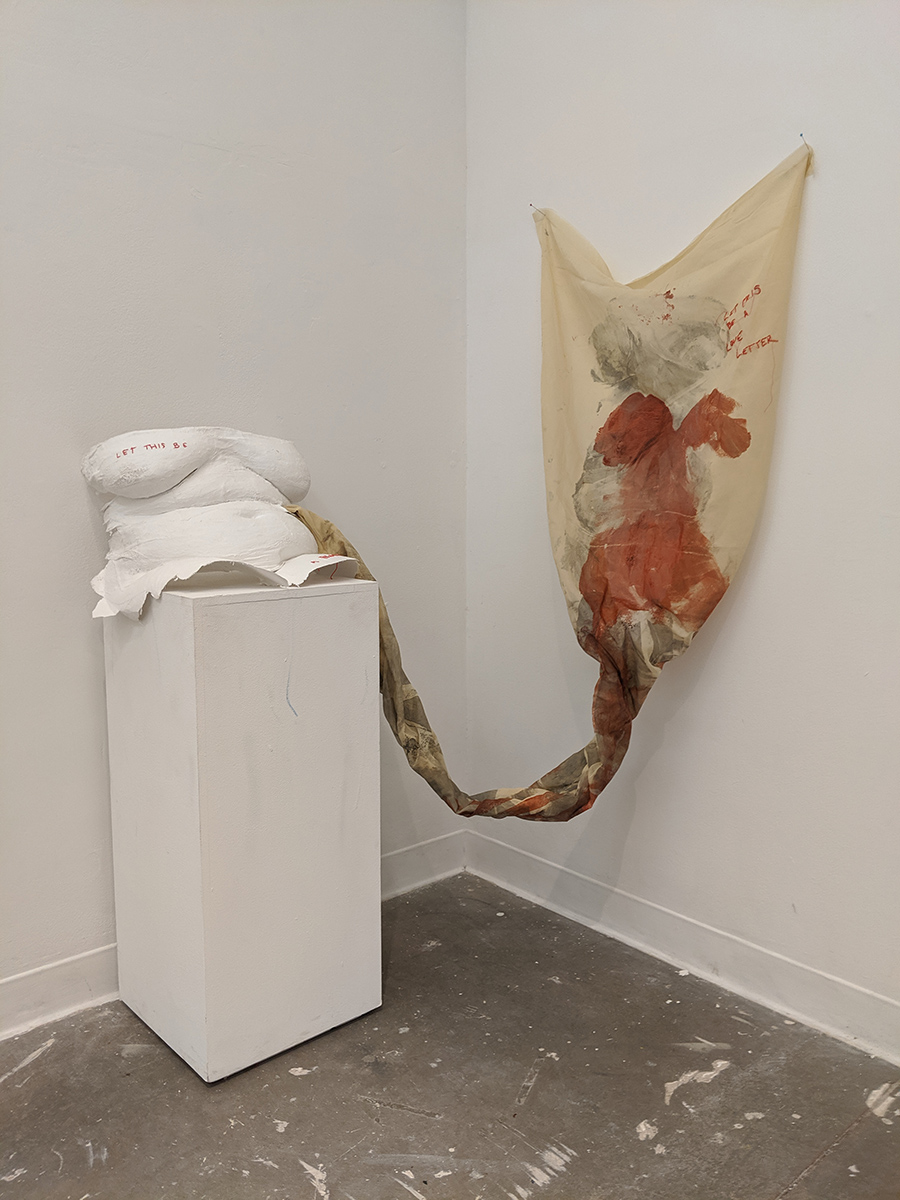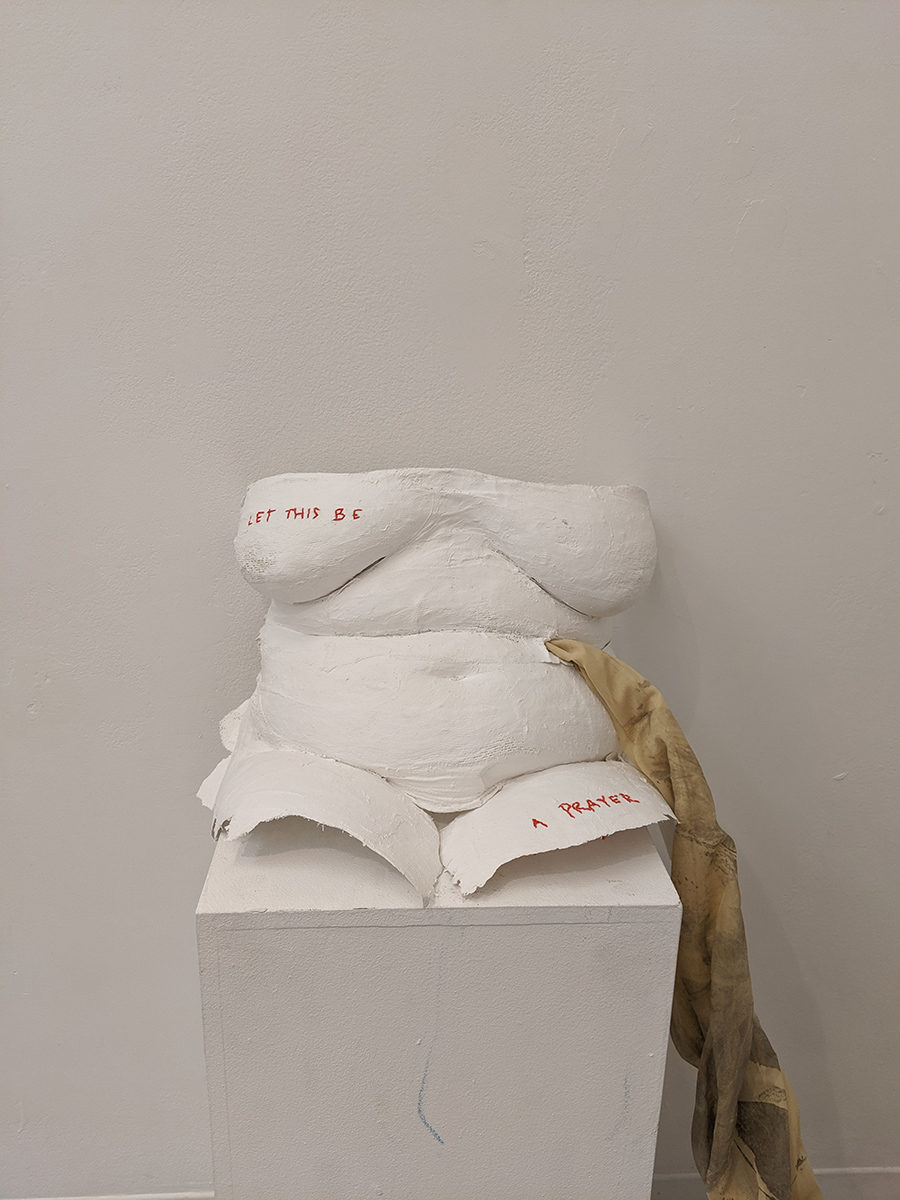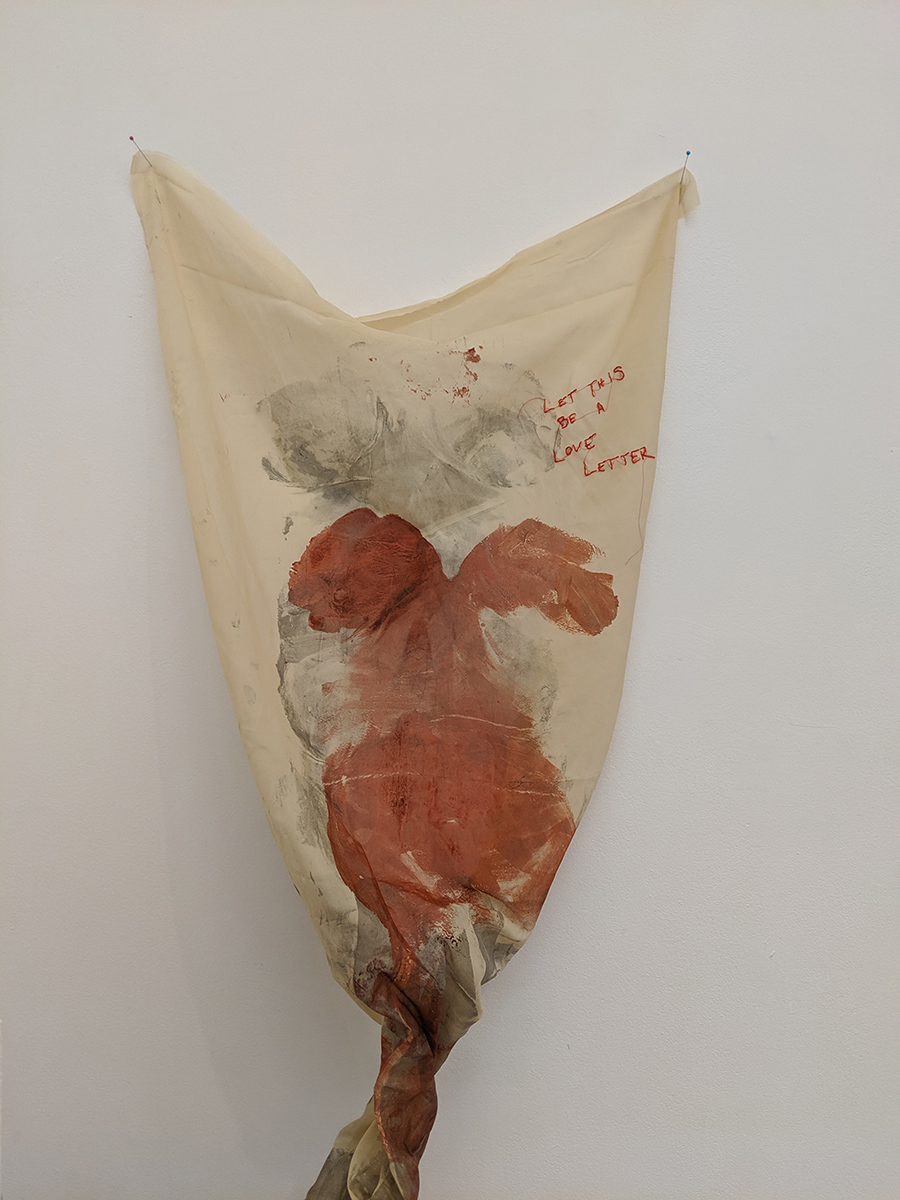Sequoia Belk-Hurst
I can’t remember when I discovered I was a witch. And I can’t remember when I discovered I was an artist. Both of these identities are intrinsic to my being, and defy explanation and an articulable history. My approach to both making art and making magic honors this primordial knowing—my practice is intuitive, impulsive, and ritualistic. Meaning in all of my work is revealed through process, which is at once kinesthetic, instinctive, and intellectual. My art centers around the human body. I work most often with the classical figure as motif, but I am also interested in breaking apart gross anatomical structures into fundamental components: systems, organs, tissues, and cells may be seen as their own discrete bodies through which an alternate understanding of the figure as a visual device is possible. Fragmenting, and isolating aspects of the body in this way expands and deepens how corporeality may take on significance.
My own body acts as a material, substrate, and reference in much of my art. I feel deeply that I am only able to speak from my own embodied experiences, and this informs how and what I create. Every piece I make is in some way a self-portrait, even if it is not representational. By engaging with personal corporeality as apparatus, art becomes a method for self-reflection, healing, and spell-crafting. I am now creating art objects in intentional and ritual spaces, wherein the act of creation becomes a kind of private performance. The piece itself may be considered a sigil; a visualized emblem for a continued magical working.
My current work explores representation of self, and incorporates drawing, painting, and printmaking into a new experimental practice of soft sculpture. I am casting parts of my body with plaster bandages, especially those parts with which I have had strained relationships, to create fragmented figures. The casts disallow idealization, and I and audiences are forced to witness my authentic body, which is both uncomfortable and liberatory in the face of an overculture of restrictive beauty standards. This copy of my corporeal self inhabits the role of an art object, and through this proxy figure my body is made sacred and precious.
In the past, I have created a myriad of works which feature body printing, and I see sculpture in the form of body casting as the next step in this conceptual method of working. It is my intention to display my two- and three-dimensional artworks in tandem, creating an environment wherein viewers may experience a visceral empathy with the installation.
